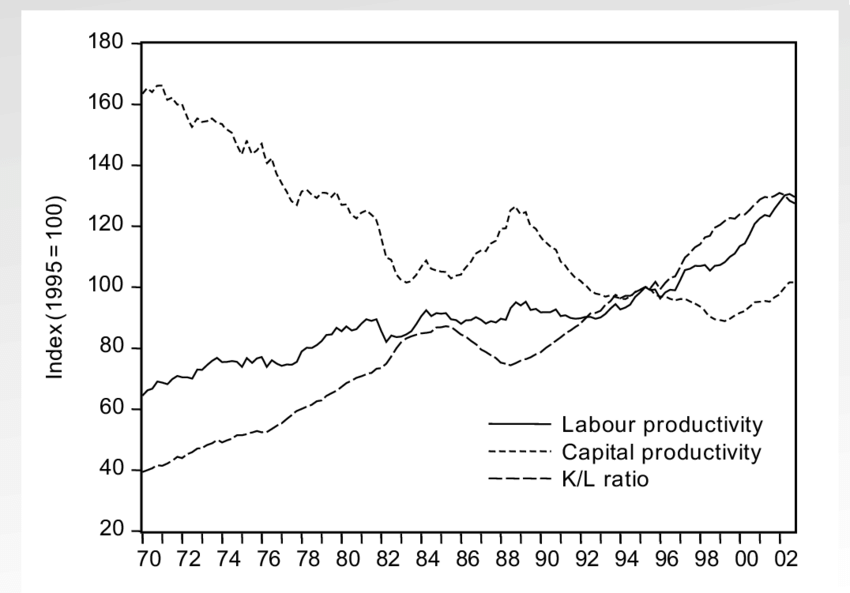Last week’s blog outlined the main economic consequences of the declining global population. This blog looks at some of the possible remedies. Two recent publications summarize some such efforts, which come in the form of improved productivity and accelerated robotics developments.
Fortune magazine examines productivity:
To economists, strong productivity growth provides an almost magical elixir. When companies roll out more efficient machines or technology, their workers can become more productive: They increase their output per hour. A result is that companies can often boost their profits and raise their employees’ pay without having to jack up prices. Inflation can remain in check. Austan Goolsbee, president of the Federal Reserve Bank of Chicago, has likened surging productivity to “magic beanstalk beans for the economy. … You can have faster income increases, faster wage growth, faster GDP without generating inflation.’’ Joe Brusuelas, chief economist at the tax and consulting firm RSM, said, “The last time we saw anything like this was the late 1990s.”That was when a productivity surge — an early payoff from the sudden embrace of laptops, cellphones and the internet — helped allow the Federal Reserve to keep borrowing rates low because inflation remained under control even as the economy and the job market sizzled.
Statista outlines robotics developments in the US:
-
The United States is expected to generate the highest revenue in the Robotics market, with projections indicating a figure of US$7.85bn in 2024.
-
Within this market, Service robotics is set to dominate, with a projected market volume of US$7.20bn in the same year.
-
Looking ahead, the revenue is anticipated to experience an annual growth rate (CAGR 2024-2028) of 4.41%, resulting in a market volume of US$9.33bn by 2028.
-
It is worth noting that these figures pertain to in the United States, making it a significant player in the global Robotics market.
The United States is experiencing a surge in the adoption of robotics technology across various industries, revolutionizing productivity and efficiency.
Figures 1, 2, and 3 summarize the important data in these areas.

Figure 1 – Recent labor productivity in the US (Source: Jabberwocking)
As mentioned above, the constant increase in productivity over the last 10 years is associated with computers, software, and robotic penetration of the workplace. The last three years have been marked by COVID-19, the displacement of workers, shifts to online, and the development of artificial intelligence to assist and sometimes displace direct human activities.

Figure 2 – Labor and capital productivities in the US (Source: ResearchGate)
As the Fortune piece above explains, labor and capital productivities are closely correlated. However, they are defined and measured differently. Their definitions are given below:
Labor productivity
Labor productivity is a measure of economic performance that compares the amount of output with the amount of labor used to produce that output.
Capital productivity
Capital productivity is the measure of how well physical capital is used in providing goods and services. Productive use of physical capital and labor are the two most important sources of a nation’s material standard of living.
Read this paper by Paul Romer for a comprehensive discussion about the links between labor, capital, and productivity.
Robotics
The International Federation of Robotics discusses the present state of robotics in the US and globally, as summarized in the following paragraph:
In the last six years, (2010-2015), the US industry has installed around 135,000 new industrial robots. The principal driver in this race to automate is the car industry. During this same period, (2010-2015), the number of employees in the automotive sector increased by 230,000.
Figure 3, taken from the same source, shows that the use of robotics in some other developed countries penetrates further than it does in the US.

Figure 3 – Penetration of robotics in a few developed countries.
Increasing productivity, whether directly—through an increase in labor productivity—or indirectly—through capital productivity—can compensate for decreased labor. The purchasing power will increase if productivity is shared with labor compensation.
As discussed in previous blogs, the world is now in the middle of a transition. The global population is shrinking but an increase in immigration will balance some of the impacts. The next blog will focus on the political ramifications of these developments.
